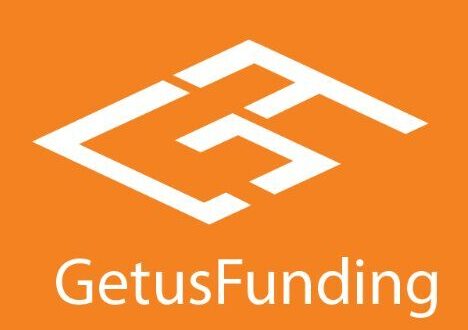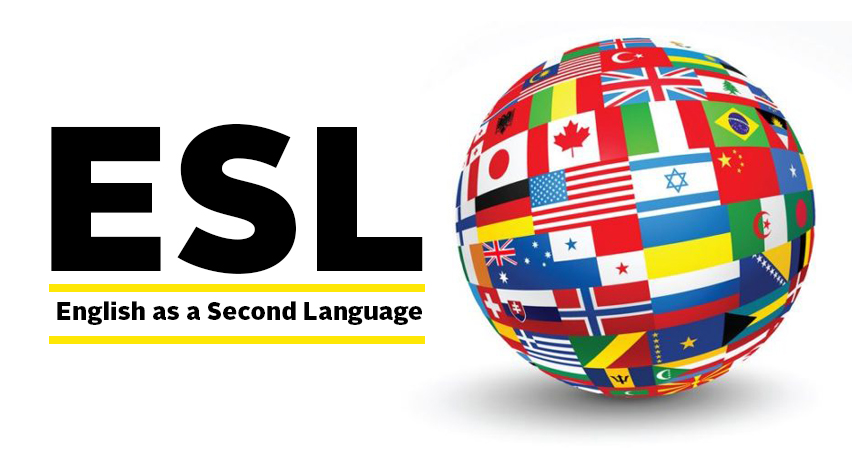Advanced ESL lessons are pivotal in shaping individuals into proficient English speakers. As learners progress in their language journey, the transition to advanced ESL education becomes imperative for mastering fluency and achieving various personal, educational, and professional goals.
This article highlights the best Advanced ESL Lessons strategy, specialized language skills, effective teaching techniques, materials to help the learning process, lesson content, and examples.
8 Advanced ESL Lessons
Here are eight (8) lessons for you:
Idiomatic Expressions and Phrasal Verbs
In this lesson, students will learn commonly used idiomatic expressions and phrasal verbs in English. These are crucial for natural, everyday conversation and understanding native speakers. We’ll explore their meanings, how to use them, and when to apply them appropriately.
Systems Aim:
- Understand and use idiomatic expressions and phrasal verbs in appropriate contexts.
- Expand vocabulary and grasp the nuances of these language elements.
Materials:
- List of idiomatic expressions and phrasal verbs.
- Sample sentences for each expression and verb.
Lesson Content:
- Introduction to idiomatic expressions and phrasal verbs.
- Explanation of the meaning and context for each expression and verb.
- Practice exercises incorporating idioms and phrasal verbs.
- Discussion on appropriateness and formality of usage.
Lesson Examples:
- Idiomatic Expression: “Bite the bullet”
- Meaning: To face a difficult or unpleasant situation bravely.
- Example: “I had to bite the bullet and tell my boss the truth.”
Skills Focused:
- Vocabulary expansion
- Contextual usage
Formal and Informal Register
This lesson focuses on understanding formal and informal language differences. Students will grasp the appropriate usage of each register based on the situation, whether for academic writing, professional communication, or casual conversations.
Systems Aim:
- Recognize and differentiate between formal and informal language registers.
- Practice using appropriate registers based on context.
Materials:
- Formal and informal phrases and sentences.
- Various contexts for application.
Lesson Content:
- Explanation of formal and informal language usage.
- Identifying formal and informal expressions in different contexts.
- Role-play exercises to practice both registers.
- Writing exercises to compose formal and informal letters/emails.
Lesson Examples:
- Formal: “I am writing to inquire about…”
- Informal: “I’m reaching out to ask about…”
Skills Focused:
- Register recognition and usage
- Written and oral communication
Advanced Grammar and Syntax
This lesson delves into more complex grammatical structures and sentence types. Students will learn to construct intricate sentences, use advanced grammar rules, and enhance their language sophistication to convey ideas more effectively.
Systems Aim:
- Understand and apply complex grammatical structures and syntax.
- Improve sentence formation and language complexity.
Materials:
- Complex sentence structures, rules, and examples.
- Sentence combining exercises.
Lesson Content:
- Explanation of advanced sentence structures and grammar rules.
- Practice exercises to construct complex sentences.
- Peer review and feedback on sentence formation.
- Discussions on when to use specific sentence structures.
Lesson Examples:
- Complex Sentence: “Despite the rain, they continued their journey.”
Skills Focused:
- Grammar proficiency
- Sentence construction
Debates and Discussions
The Debates and Discussions lesson encourages critical thinking and effective communication. Students will participate in lively debates, learn to formulate arguments, and practice expressing their opinions in a structured and persuasive manner.
Systems Aim:
- Develop critical thinking and argumentation skills.
- Enhance the ability to express and defend viewpoints.
Materials:
- Debate topics, supporting evidence, and argumentation structures.
- Timer for structured debates.
Lesson Content:
- Introduction to debating skills and techniques.
- Assigning debate topics and forming teams.
- Structured debates with time limits and rebuttals.
- Post-debate analysis and feedback session.
Lesson Examples:
- Debate Topic: “Should plastic bags be banned?”
- Students prepare arguments for and against the topic.
Skills Focused:
- Critical thinking
- Public speaking
Literary Analysis and Interpretation
In this lesson, students will analyze literary texts to understand deeper meanings, literary devices, and themes. They’ll develop skills to interpret and discuss literary works, fostering a deeper appreciation for literature.
Systems Aim:
- Analyze literary texts for themes, literary devices, and characterization.
- Enhance comprehension and interpretation skills.
Materials:
- Various literary texts (short stories, poems, or excerpts).
- Literary analysis worksheets and tools.
Lesson Content:
- Introduction to literary analysis techniques and terminology.
- Guided analysis of a chosen literary piece.
- Group discussions on interpretations and themes.
- Individual or group presentations on analyzed pieces.
Lesson Examples:
- Literary Device: “Metaphor”
- Analysis of metaphors in a given poem.
Skills Focused:
- Critical analysis
- Interpretation of written material
Academic Writing and Research Skills
This lesson guides students in mastering academic writing styles and honing research skills. They’ll learn to structure academic papers, cite sources properly, and conduct research effectively, preparing them for scholarly endeavours.
Systems Aim:
- Develop academic writing skills, including structure and citation.
- Enhance research abilities and source evaluation.
Materials:
- Academic writing guidelines, citation styles (e.g., APA, MLA), and research resources.
- Writing prompts and research topics.
Lesson Examples:
Correcting In-text Citations:
- Given text: “According to Smith (2018), climate change is a global concern.”
- Correction: “Climate change is a global concern (Smith, 2018).”
Skills Focused:
- Citation and referencing proficiency
- Plagiarism awareness and prevention
- Editing and proofreading techniques
- Effective academic presentation skills
Business Communication and Professional Correspondence
Students will learn the ins and outs of professional communication in this lesson. From drafting formal emails to composing business letters, they’ll gain essential communication skills in a corporate setting.
Systems Aim:
- Master effective business communication skills.
- Develop professionalism in written and oral correspondence.
Materials:
- Sample business emails, letters, and communication scenarios.
- Role-play and case study materials.
Lesson Content:
- Discussing strategies for effective negotiation and persuasion in business communication.
- Providing examples and role-play scenarios for negotiation.
- Activity: Role-play negotiation exercises where students represent different stakeholders.
Lesson Examples:
- Negotiation Scenario: Negotiating a Business Deal
- Students role-play negotiations between buyers and sellers, focusing on reaching a mutually beneficial agreement.
Skills Focused:
- Negotiation and persuasion skills
- Conflict resolution and management
- Formal business report and proposal writing
- Effective business presentation techniques
Media Literacy and Multimedia Analysis
This lesson helps students navigate the vast world of media. They’ll learn to critically evaluate different media forms, identify biases, and comprehend the impact of media on language and society.
Now, let’s proceed with outlining the system aims for each lesson.
Systems Aim:
- Develop critical media literacy skills to evaluate and analyze media content.
- Understand the impact of media on language and society.
Materials:
- Various media content (news articles, videos, advertisements) from diverse sources.
- Media analysis worksheets and discussion prompts.
Lesson Content:
- Discussing the importance of digital literacy in the modern media landscape.
- Analyzing the credibility of online sources and identifying misinformation.
- Exercise: Evaluating the reliability of online news articles.
Understanding Bias and Propaganda
- Teaching students to recognize biases in media and propaganda techniques.
- Analyzing media content to identify political, cultural, or social biases.
- Activity: Analyzing news articles from different sources to identify biased reporting.
- Ethics in Media and Responsible Consumption
- Discussing the ethical responsibilities of media creators and consumers.
- Encouraging critical consumption and responsible sharing of media content.
- Group Discussion: Ethical considerations in various media scenarios.
- Creating and Presenting a Multimedia Analysis
- Guiding students in creating a multimedia analysis project.
- Providing tips on effective presentation and communication of their analysis.
- Each student presents their multimedia analysis project to the class.
Lesson Examples :
- Digital Literacy Exercise: Spotting Fake News
- Students analyze news articles and determine if they are credible or fake.
Skills Focused:
- Digital literacy and online source evaluation
- Recognizing and analyzing biases in media
- Ethical media consumption and responsible sharing
- Multimedia analysis and effective presentation skills
How do you structure an ESL course?
Structuring an ESL course involves careful planning and organization to ensure effective language acquisition. The course typically starts with an assessment to determine the learners’ proficiency levels.
Next, foundational skills like vocabulary, grammar, and sentence structure are introduced. As the course progresses, more complex language elements and skills, including reading, writing, listening, and speaking, are integrated.
Cultural aspects and practical language usage in various contexts are also covered. Continuous assessment and feedback mechanisms track progress and adapt the course. The course concludes with a review and reinforcement of key concepts.
Tips for building advanced ESL lesson plans
Here are some tips to guide you in building impactful advanced ESL lesson plans:
Understand Your Learners:
Tailor your lesson plans to advanced ESL learners’ specific needs, interests, and goals. It is crucial to understand their proficiency level, cultural background, and preferred learning styles.
Set Clear Objectives:
Clearly define the learning objectives for each lesson. Ensure that these objectives align with the overall goals of the course and focus on refining advanced language skills.
Integrate Authentic Materials:
Use real-world materials like news articles, academic papers, and business communications to expose learners to authentic language usage. This helps bridge the gap between classroom learning and real-life application.
Incorporate Diverse Activities:
Include various activities such as debates, discussions, role-plays, case studies, and multimedia presentations. Diverse activities engage learners, encourage critical thinking, and foster practical language application.
Promote Critical Thinking:
Design activities that require analysis, evaluation, and interpretation of information. Encourage learners to think critically and express their opinions effectively.
Foster Collaborative Learning:
Incorporate group projects, peer reviews, and collaborative discussions to enhance communication skills and promote a cooperative learning environment.
Provide Constructive Feedback:
Offer timely and constructive feedback on learners’ written and verbal performance. Highlight their strengths and areas for improvement, encouraging continuous progress.
Focus on Language Fluency and Accuracy:
Balance lessons between enhancing fluency and maintaining accuracy. Address advanced grammar, vocabulary, and pronunciation while encouraging learners to communicate fluently and confidently.
Connect to Real-Life Situations:
Relate lesson content to real-life scenarios that learners might encounter in academic, professional, or social settings. This contextual approach enhances practical language application.
Use Technology Wisely:
Integrate technology tools like language learning apps, online resources, and multimedia to make lessons engaging and interactive, promoting self-directed learning.
Incorporate Multimodal Learning:
Engage learners through various sensory experiences—visual, auditory, and kinesthetic. Utilize videos, images, music, and interactive activities to cater to different learning styles.
Encourage Self-Reflection:
Prompt learners to reflect on their language learning journey, set personal language goals, and track their progress. This self-awareness fosters motivation and a sense of achievement.
Adaptability and Flexibility:
Be flexible in adjusting lesson plans based on learner feedback, progress, or unexpected needs that may arise during the course. Adaptability ensures the course remains effective and relevant.
Conclusion
Crafting effective advanced ESL lessons involves a delicate balance between understanding the learners’ unique needs, setting clear objectives, and incorporating a diverse range of teaching techniques.
Ultimately, advanced ESL lessons’ success lies in cultivating a dynamic learning environment that nurtures fluency, accuracy, cultural understanding, and the confidence to communicate effectively in diverse real-life contexts.
With a student-centred approach and a commitment to continuous improvement, educators can empower learners to navigate the intricate realm of advanced English language proficiency with competence and enthusiasm.

